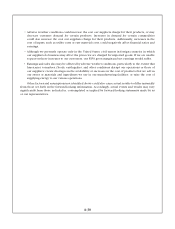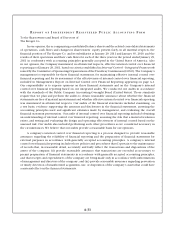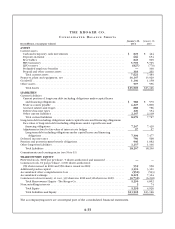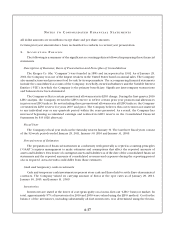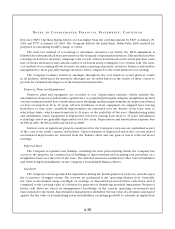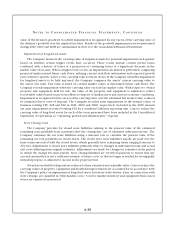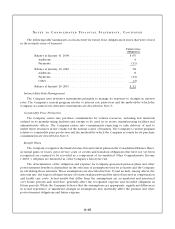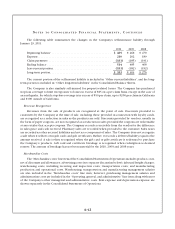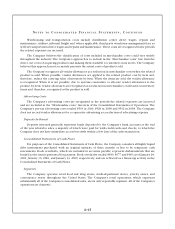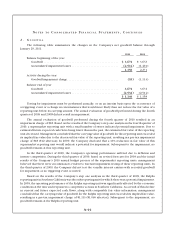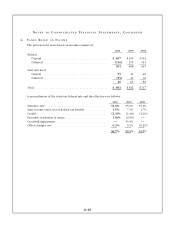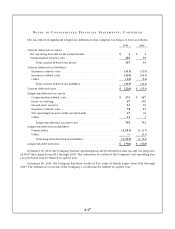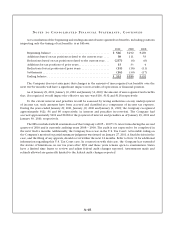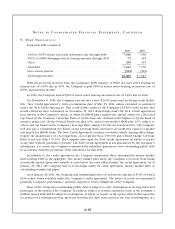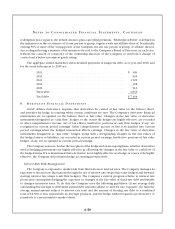Kroger 2010 Annual Report Download - page 120
Download and view the complete annual report
Please find page 120 of the 2010 Kroger annual report below. You can navigate through the pages in the report by either clicking on the pages listed below, or by using the keyword search tool below to find specific information within the annual report.
A-40
NO T E S T O CO N S O L I D A T E D FI N A N C I A L ST A T E M E N T S , CO N T I N U E D
The following table summarizes accrual activity for future lease obligations of stores that were closed
in the normal course of business:
Future Lease
Obligations
Balance at January 31, 2009 . . . . . . . . . . . . . . . . . . . . . . . . . . . . . . . . . . $ 65
Additions .............................................. 4
Payments .............................................. (11)
Balance at January 30, 2010 . . . . . . . . . . . . . . . . . . . . . . . . . . . . . . . . . . 58
Additions .............................................. 8
Payments .............................................. (12)
Other ................................................. (2)
Balance at January 29, 2011 . . . . . . . . . . . . . . . . . . . . . . . . . . . . . . . . . . $ 52
Interest Rate Risk Management
The Company uses derivative instruments primarily to manage its exposure to changes in interest
rates. The Company’s current program relative to interest rate protection and the methods by which the
Company accounts for its derivative instruments are described in Note 6.
Commodity Price Protection
The Company enters into purchase commitments for various resources, including raw materials
utilized in its manufacturing facilities and energy to be used in its stores, manufacturing facilities and
administrative offices. The Company enters into commitments expecting to take delivery of and to
utilize those resources in the conduct of the normal course of business. The Company’s current program
relative to commodity price protection and the methods by which the Company accounts for its purchase
commitments are described in Note 6.
Benefit Plans
The Company recognizes the funded status of its retirement plans on the Consolidated Balance Sheet.
Actuarial gains or losses, prior service costs or credits and transition obligations that have not yet been
recognized are required to be recorded as a component of Accumulated Other Comprehensive Income
(“AOCI”). All plans are measured as of the Company’s fiscal year end.
The determination of the obligation and expense for Company-sponsored pension plans and other
post-retirement benefits is dependent on the selection of assumptions used by actuaries and the Company
in calculating those amounts. Those assumptions are described in Note 13 and include, among others, the
discount rate, the expected long-term rate of return on plan assets and the rates of increase in compensation
and health care costs. Actual results that differ from the assumptions are accumulated and amortized
over future periods and, therefore, generally affect the recognized expense and recorded obligation in
future periods. While the Company believes that the assumptions are appropriate, significant differences
in actual experience or significant changes in assumptions may materially affect the pension and other
post-retirement obligations and future expense.


